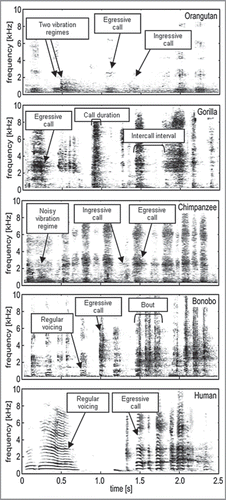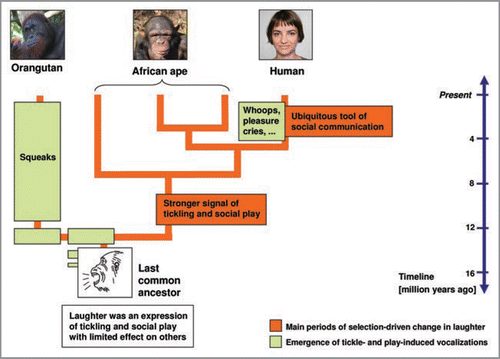Figures & data
Figure 1 Representative spectrograms (40-ms Hanning window) of tickle-induced vocalizations from four great ape species and humans. Recordings had a 22,050-Hz sampling rate. This illustration first appeared as in Davila Ross et al.Citation20

Figure 2 Model of the evolution of laughter and other vocalizations of tickling and play in great apes and humans. Two main periods of acoustic and function-related changes in laughter were likely to have occurred within the past ten to sixteen million years while other tickle- and play-induced vocalizations evolved. It remains unknown whether laughter and squeaks emerged prior to or in the common ancestor of great apes and humans. Notably, lesser apes produce tickle-induced vocalizations that acoustically resemble orangutan laughter (e.g., Symphalangus syndactylus: Davila Ross et al.Citation20; Hylobates lar: Zimmermann pers. obs.) and squeak-like calls during play (Nomascus spp.: Thomas Geissmann, pers. comm.). The figure is adapted from Davila Ross et al.Citation20 Figure 4.
